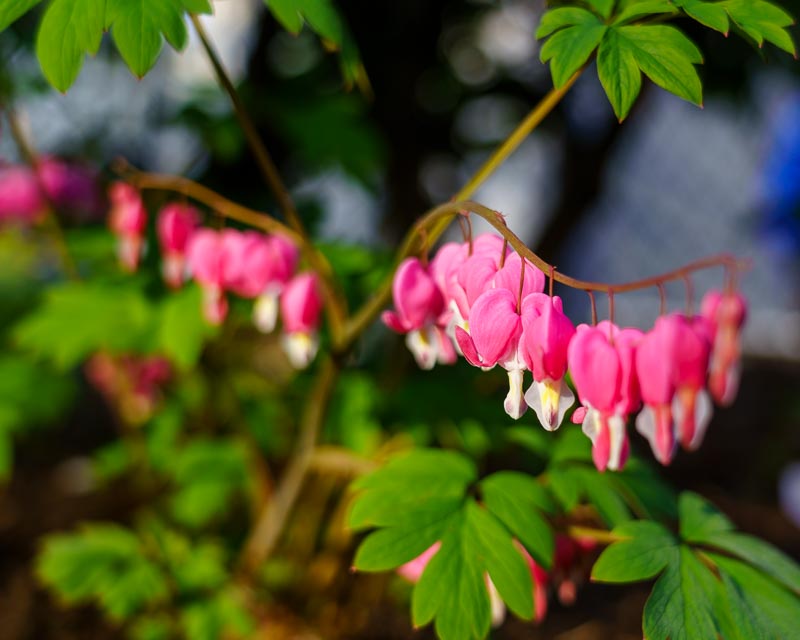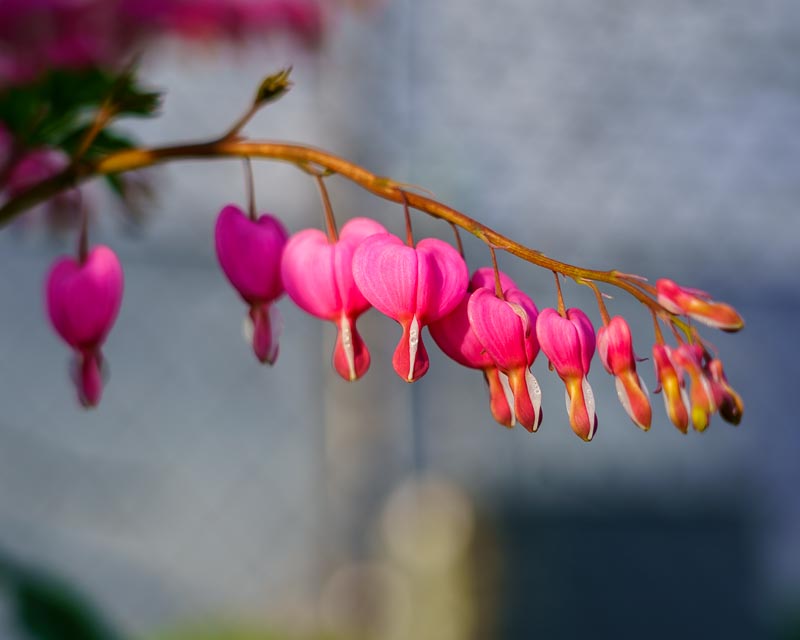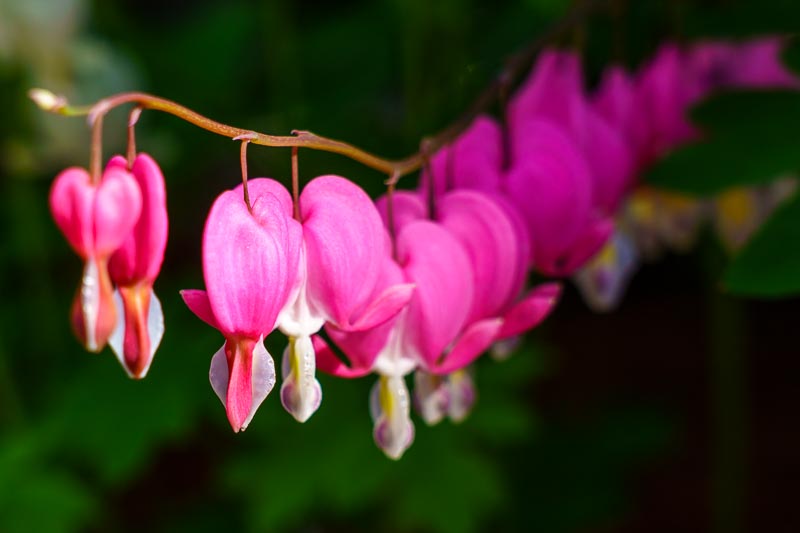Bleeding Heart
Common Name:
Bleeding Heart
Botanical Name:
Lamprocapnos spectabilis
Mature Size:
1–3 ft. tall, 2–3 ft. wide
Sun Exposure:
Partial, shade
Soil Type:
Moist, well-drained
Soil pH:
Acidic, neutral
Bloom Time:
Spring
Flower Color:
Red w/white
Care:
Once established, it's fairly easy to take care of a bleeding heart plant. It's not overly prone to pests and diseases. And it has a bit of drought tolerance, though it still prefers moist soil for the healthiest growth. Plus, bleeding hearts will self-seed as long as the blooms remain on the plants. So bleeding hearts can live indefinitely in your garden, yet they don't tend to spread uncontrollably.
Soil:
Bleeding heart prefers humus-rich, moist, well-draining soil with lots of organic matter. A slightly acidic to neutral soil pH is best. Prior to planting, it's ideal to work a few inches of compost into the soil, especially if you don't have organically rich soil.
Water:
Bleeding heart likes a lightly moist soil. It doesn't tolerate soggy or dry soils very well. Water throughout the growing season when the top inch of soil has dried out, even during summer dormancy to keep the roots hydrated. But make sure the soil doesn't stay waterlogged, which can lead to root rot.
Temperature and Humidity:
This plant's ideal temperature is between 55 and 75 degrees Fahrenheit, and it has good tolerance for high humidity. As the summer heat ramps up, you'll likely see the foliage yellowing. This is a perfectly normal sign of the plant going dormant to store its energy.
Fertilizer:
Bleeding heart plants are not heavy feeders, so when to fertilize depends on the quality of your soil. If you have rich, organic soil amended every year, you likely won't have to feed at all. If you have poor soil, you can apply an all-purpose, slow-release fertilizer in the spring. Also, as a woodland plant, bleeding heart does well with a top dressing of leaf mold.
Pruning:
No major pruning is required, though you can trim back the foliage as it becomes brown and unsightly prior to dormancy. Fringed-leaf bleeding heart varieties can sometimes get a little ragged-looking and can be sheared back to their basal growth; they will re-leaf and rebloom. Refrain from deadheading (removing the spent blooms) if you want the flowers to go to seed.
Overwintering:
Bleeding heart will naturally die back during the winter season. But the roots should survive the cold weather, even if the plant appears dead above ground. As the plant depreciates prior to winter, you can cut the stems down to 1 or 2 inches from ground level. Keep watering the soil up until the first frost. At the start of winter, you can protect the roots and help them retain moisture by adding a 2-inch layer of mulch on top of the plant stems. Remove the mulch as the ground thaws in the spring.
Source:
https://www.thespruce.com/growing-bleeding-heart-plants-1402834



